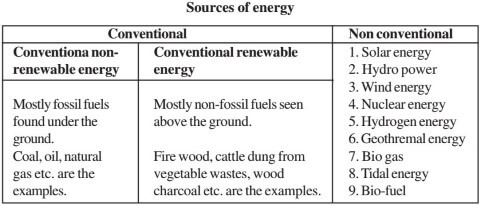Non Conventional Energy Sources Notes Pdf

ADVERTISEMENTS: Energy is one of the most important component of economic infrastructure. It is the basic input required to sustain economic growth. There is direct relation between the level of economic development and per capita energy consumption. Simply speaking more developed a country, higher is the per capita consumption of energy and vice-versa. India’s per capita consumption of energy is only one eighth of global average. This indicates that our country has low rate of per capita consumption of energy as compared to developed countries.
Two Main Sources of Energy: The sources of energy are of following types. ADVERTISEMENTS: Commercial Energy Sources: These are coal, petroleum and electricity.
Wordpress premium themes crack Get daily updates on popular Zee TV serials, news, photos & videos! The channel has always rank highed on the charts with shows like Kumkum Bhagya, Jamai Raja, Dance India Dance,. Kumkum bhagya serial title song download 2017 full.
These are called commercial energy because they have a price and consumer has to pay the price to purchase them. (a) Coal and Lignite: Coal is the major source of energy. Coal deposits in India are 148790 million tonnes. Total lignite reserves found at Neyveli are 3300 million tonnes. In 1950-51, annual production of coal was 32 million tonnes. In 2005-06, annual production of coal was 343 million tonnes. Lignite production was 20.44 million tonnes in 2005-06.
Sep 19, 2013 The comparison between the Conventional and Non-conventional sources of Energy is mentioned below: Conventional energy, such as thermal powers (from coal, petroleum, and natural gas), hydel power (from high velocity of running water) are tapped and used abundantly at present.
According to an estimate, coal reserves in India would last about 130 years. India is now the fourth largest coal producing country in the world. Coal deposits are mainly found in Orissa, Bihar, Bengal and Madhya Pradesh. Download free software the jeffy show rapidshare downloader. It provides employment to 7 lakh workers. (b) Oil and Natural Gas: In these days oil is considered as the most important source of energy in India and the world. It is widely used in automobiles, trains, planes and ships etc.
In India it is found in upper Assam, Mumbai High and in Gujarat. The resources of oil are small in India. In 1950-51, the total production of oil in India was 0.3 million tonnes. It increased to 32.4 million tonnes in 2000-01. Despite tremendous increase in oil production.
India still imports 70% of has oil requirements from abroad. In 1951, there was only one oil refinery in Assam. After independence 13 such refineries were set up in public sector and their refining capacity was 604 lakh tonnes. After implementation of economic reforms, private refineries are also engaged in oil refining. As per current rate of consumption, oil reserves in India may last about 20 to 25 years. (c) Electricity: Electricity is the common and popular source of energy. It is used in commercial and domestic purposes.
It is used for lighting, cooking, air conditioning and working of electrical appliances like T.V., fridge and washing machine. In 2000-01 agriculture sector consumed 26.8%, industrial sector 34.6% and 24% of electricity was used for domestic purposes and 7% was used for commercial purpose. Railways consumed 2.6% and miscellaneous consumption was 5.6%. There are three main sources of power generation: 1. Thermal Power 2.